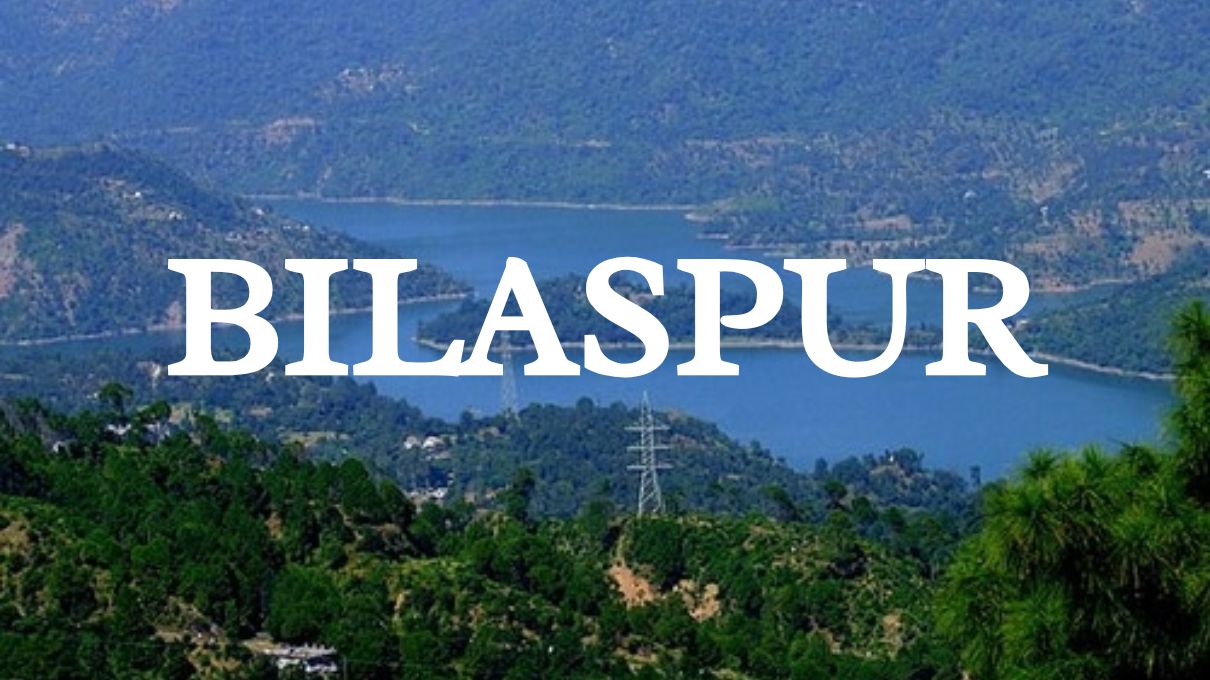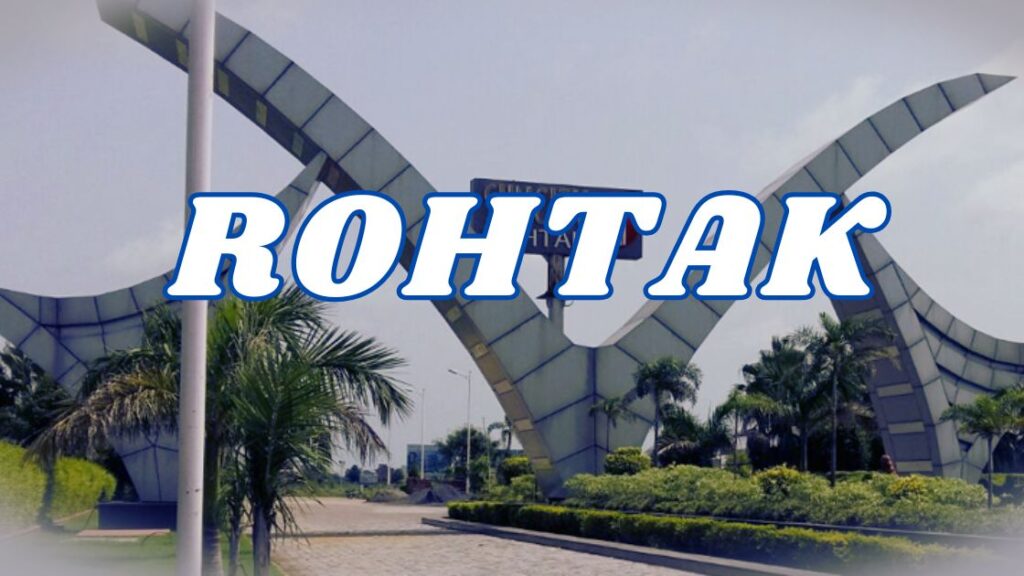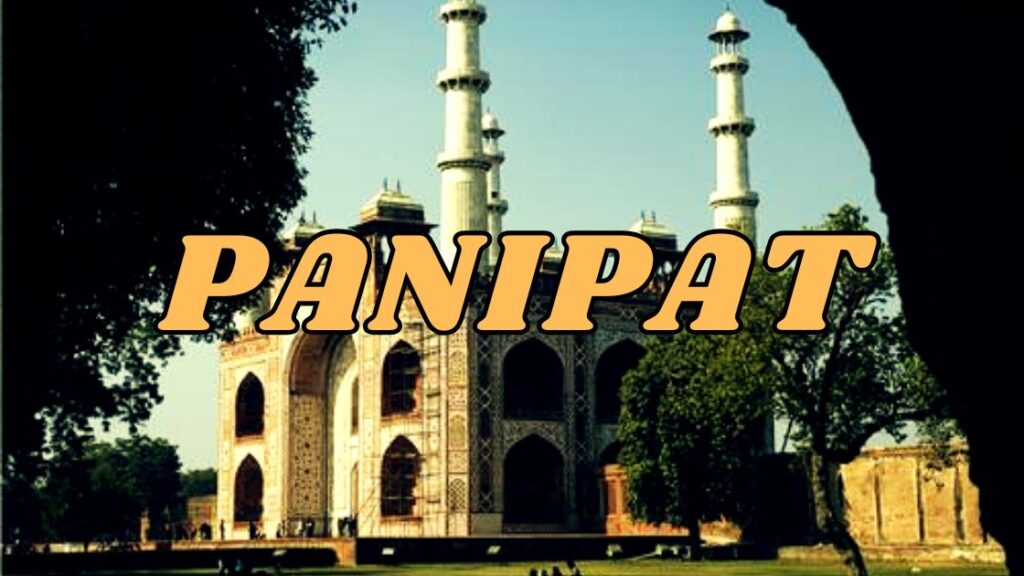All about Bilaspur
Bilaspur, located in Chhattisgarh’s Bilaspur District, serves as the administrative headquarters of both the district and the Bilaspur Division. Its prominence extends beyond administration, earning the title of Nyaya Dhani (Law Capital) of Chhattisgarh due to the presence of the Chhattisgarh High Court, situated in Bodri. Recognized as the commercial and business hub of Northeast Chhattisgarh, Bilaspur plays a crucial role in the region’s economic and judicial activities. The city’s significance is amplified by its strong connection to the Indian Railways, serving as the headquarters for the Southeast Central Railway Zone (SECR) and the Bilaspur Railway Division.
Moreover, it is home to the Southeastern Coalfields Limited, a key player in the coal industry. Adding to its industrial importance, the NTPC-operated power plant in Sipat, one of the largest in the state, powers much of the region. From here, PowerGrid’s HVDC line transmits electricity to Delhi, showcasing Bilaspur’s pivotal role in India’s energy network.
Bilaspur – Hub of Economic, Judicial, and Industrial Growth
Bilaspur’s cultural identity is deeply tied to its aromatic Doobraj rice and handwoven Kosa silk sarees, renowned for their vivid colors and soft texture. These sarees are an emblem of the city’s rich handloom tradition. Supporting this heritage, the Basic Tasar Silkworm Seed Organisation (BTSSO), under the Central Silk Board of India, ensures a steady supply of nucleus and basic Tasar seeds, fostering the growth of the silk industry in and around the city. Adding a unique geographical detail, the Indian Standard Time (IST), marked by UTC+05:30, passes just 30 kilometers east of Bilaspur.
Bilaspur’s journey towards modernization is evidenced by its inclusion in the Smart Cities Mission, positioning it as one of India’s 100 cities slated for urban transformation. This initiative aims to enhance its infrastructure, governance, and overall quality of life, making it a beacon of progress for the state of Chhattisgarh.
Historical Chronicle of Growth and Resilience
Bilaspur’s roots are deeply embedded in the rich history of Dakshina Kosala, a significant region in ancient India. It was closely linked to Malhar (ancient Mallar), Sirpur (ancient Shripura), Tuman (ancient Tummana), and Ratanpur (ancient Ratnapura), which served as centers of power and culture. Beginning in the 5th century, the area was under the control of the Kalachuri dynasty of Ratanpur, a ruling family that shaped the region’s development for centuries. Ratanpur itself stood as the historical capital of Chhattisgarh, hosting various dynasties over time. Bilaspur began emerging as a prominent city in 1741, during the Maratha Empire’s expansion, when a Maratha official settled in the region to oversee the Kalachuri legacy of Ratanpur.
The British East India Company took administrative control of Bilaspur District in 1818, after the Marathas, led by the Bhosales of Nagpur, suffered defeat in the Third Anglo-Maratha War. During the Maratha rule, local governance included influential zamindars and subedars, such as Akbar Khan, Vazeer Khan, and Sao. Bilaspur District was officially established in 1861, marking the beginning of its formal governance structure. The formation of Bilaspur Municipality followed shortly in 1867, further cementing its civic identity.

Natural disasters and resilience characterized Bilaspur’s 19th-century history. Famines ravaged the district multiple times—in 1828–29, 1834–35, 1845–46, 1868–69, and the catastrophic 1899–1900 famine. Particularly severe droughts caused widespread distress and significant migration, leaving many villages deserted. The 1896 crop failure led to a famine in 1897, where the mortality rate rose to a staggering one in six people. These hardships, however, were interspersed with years of recovery and growth, reflecting the resilience of the region’s people.
Amid this turbulent period, Guru Ghasidas (1756–1836) emerged as a beacon of spiritual guidance. He founded the Satnami movement in the early 19th century, primarily around the Sonakhan forests. This movement preached the worship of Satnam, which denotes truth, advocating a monotheistic ideology and opposing idol worship. His teachings resonated deeply among farming communities and left a lasting cultural legacy. To honor his contributions, Guru Ghasidas University in Bilaspur proudly bears his name.
The arrival of the Bengal Nagpur Railway in the 1880s marked a transformative period in Bilaspur’s development. Renowned railway contractors such as Mistri Jagmal Gangji and Khoda Ramji were instrumental in laying the Rajnandgaon-Bilaspur railway line and extending it to Jharsuguda. These projects included significant feats of engineering, such as the Champa River bridge, which symbolized Bilaspur’s growing connectivity. In 1890, Bilaspur’s railway station and yard were constructed, largely through the efforts of Gujarati contractor Jagmal Gangji Sawaria, whose contributions to the city’s infrastructure earned him lasting recognition. His son, Mulji Jagmal Sawaria, was honored with the title “Rao Sahib” by the British. To commemorate this, landmarks such as Jagmal Block and Jagmal Chowk bear his name today.
By 1901, Bilaspur had a population of 18,937, making it the eighth-largest town in the Central Provinces of British India. Its vibrant economy, even then, was bolstered by thriving industries such as weaving tasar silk and cotton clothing, which showcased the craftsmanship of the local populace. These industries played a pivotal role in defining Bilaspur’s identity as a center of artisanal excellence.
Bilaspur’s historical narrative is one of evolution, shaped by its rulers, the resilience of its people in the face of natural calamities, and its embrace of modern infrastructure. From its ancient role as part of Dakshina Kosala to its emergence as a regional power hub, Bilaspur has demonstrated its ability to adapt, endure, and flourish across centuries. Today, the city stands as a vibrant example of how historical richness and modern progress can coexist harmoniously.
Etymology of Bilaspur: A Blend of Legends and Linguistics
The origins of the name Bilaspur, located in the heart of Chhattisgarh, are steeped in historical lore and cultural significance. Historical texts, such as the Imperial Gazetteer of India (Volume 8, 1908), attribute the name to a fisherwoman named Bilasa, who lived in the region during the 17th century. According to this account, the area initially consisted of a modest collection of fishermen’s huts, and the city gradually grew around this humble settlement, carrying forward the name of its legendary figure.
Another perspective on the city’s name is rooted in the region’s natural environment. As recorded in The Highlands of Central India (James Forsyth, 1889), Bilaspur derives its name from the ‘Palash tree’ (Butea frondosa), which is found in abundance across the landscape. These trees, known for their vibrant orange-red flowers, are a distinctive feature of the area, adding to its ecological and cultural richness.
A more linguistic interpretation ties the city’s name to Sanskrit origins. The word “Bilas” translates to playfulness or enjoyment, while “Pur” signifies a city or town. Combined, Bilaspur is poetically understood as the “City of Enjoyment”, highlighting a notion of liveliness and vibrancy intrinsic to its identity.
Whether associated with the legendary Bilasa, the vivid Palash trees, or its Sanskrit roots, the name Bilaspur reflects a rich tapestry of history, nature, and cultural essence that continues to define the city’s charm and legacy.
Geography of Bilaspur: A Strategic Location with Rich Natural Resources
Nestled at 22.09°N latitude and 82.15°E longitude, Bilaspur enjoys a modest elevation of 264 meters (866 feet) above sea level. The city is scenically located along the banks of the Arpa River, a rain-fed tributary originating in the Maikal Range of Central India, enhancing the region’s agricultural and ecological diversity.
Bilaspur’s landscape is marked by dolomite-rich terrains to the south, bordered by dense forests in the north and the coal-laden Hasdeo Valley to the east. These geographical riches significantly contribute to the city’s status as a commercial and industrial hub. Strategically surrounded by districts like Gaurella-Pendra-Marwahi to the north and Korba, Janjgir-Champa, and Baloda Bazar-Bhata Para in the east and south, Bilaspur stands at the crossroads of economic and logistical pathways.
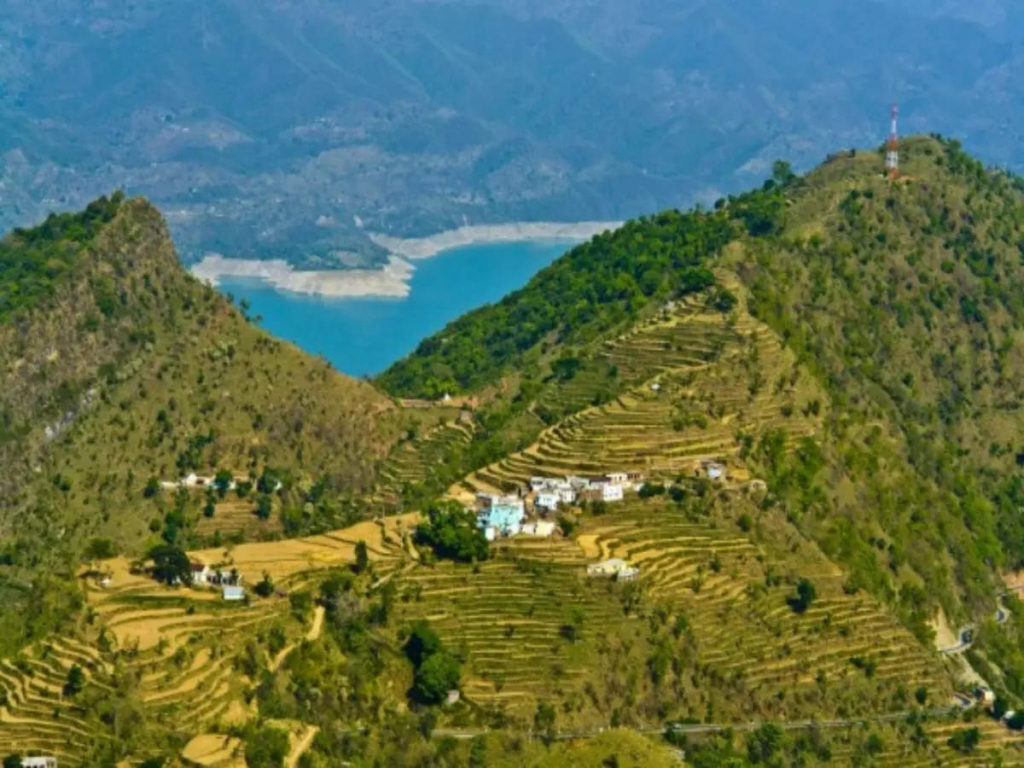
Major urban centers around Bilaspur include Raipur, the state capital, and Durg-Bhilai to the southwest, Nagpur to the west, Jabalpur and Bhopal to the northwest, and Ranchi and Patna to the northeast. Notable eastern hubs like Korba, Raigarh, and Bhubaneswar are easily accessible from the city, underscoring its strategic importance for trade, travel, and connectivity.
Climate: A Tapestry of Extremes
Bilaspur’s climate is characterized by distinct seasonal variations, leaning toward subtropical patterns with hot summers, moderate rainfall, and pleasant winters. Temperatures in the summer often exceed 48°C (113°F), making it one of the hottest cities in Chhattisgarh during peak heatwaves. Winters, on the other hand, bring significant relief, with nighttime temperatures occasionally plummeting to 3–4°C (37°F), particularly in December.
The monsoon season, influenced by the southwest winds, brings moderate yet impactful rainfall, with average precipitation nearing 1,208 mm (47.56 inches) annually. July and August witness the highest rainfall, contributing significantly to the region’s agricultural prosperity. The city experiences approximately 63 rainy days annually, making the monsoon a vital period for replenishing water bodies and sustaining crops.
According to historical climate data from the India Meteorological Department (1991–2020), Bilaspur’s weather extremes have been well-documented. The highest recorded temperature was a sweltering 49.3°C (120.7°F) in May, while the lowest plunged to a chilly 5.9°C (42.6°F) in December, underscoring the climatic variations that define the city’s environment.
Arpa River: A Lifeline to the Region
The Arpa River, originating in the Maikal Range, flows gracefully through Bilaspur, providing essential irrigation and enhancing the fertility of its banks. The river, a seasonal waterway, is vital for sustaining local agriculture, while its picturesque surroundings add to the city’s aesthetic appeal.

Industrial Impact and Environmental Balances
Bilaspur’s geography supports a thriving industrial ecosystem due to its natural mineral resources and strategic location. However, the heavy reliance on industries like coal mining and power generation necessitates a careful balance between economic progress and environmental sustainability. Concerted efforts are needed to address challenges such as deforestation and pollution in the region to ensure a sustainable future for this vibrant city.
By blending its geographical bounty, climatic resilience, and industrial prominence, Bilaspur emerges as a cornerstone of growth and opportunity within Chhattisgarh and beyond. The city’s location, environment, and infrastructure continue to define its unique identity as a hub of development, commerce, and culture.
Demographics of Bilaspur: A Vibrant Tapestry of Diversity and Growth
Bilaspur, often regarded as the cultural and economic hub of Chhattisgarh, boasts a dynamic demographic profile reflecting its historical significance and modern development.
Population Dynamics
According to the 2011 Census of India, the Bilaspur Municipal Corporation recorded a population of 331,030. The broader urban area population stood at an estimated 365,579. In a major expansion move in August 2019, 18 adjacent towns and suburban areas were incorporated into the Bilaspur Municipal Corporation, further augmenting its population and geographic scope.
Males account for 51% of the population, while females make up 49%, reflecting a near-equitable gender distribution. The population of children under the age of 6 constitutes 15% of the total demographic.
At the district level, Bilaspur District had a population of 2,662,077 as per the 2011 Census, positioning it 152nd in India among 640 districts. This population is comparable to that of Kuwait or the U.S. state of Nevada, highlighting its significant size in both an Indian and global context.
Literacy and Education
Bilaspur takes pride in its impressive literacy achievements. The city has an average literacy rate of 91.29%, notably higher than the national average of 59.5%. Male literacy stands at 92.94%, while female literacy is at 88.33%, reflecting strides toward gender equality in education.
In the broader district context, the literacy rate is slightly lower at 71.59%, indicative of disparities between urban and rural educational access. However, ongoing development initiatives aim to bridge these gaps and enhance educational standards across the region.
Sex Ratio and Population Growth
Bilaspur District reports a sex ratio of 972 females per 1,000 males, which is higher than many parts of India. Over the decade 2001–2011, the district experienced a robust population growth rate of 33.21%, signaling its expanding urbanization and economic opportunities that continue to attract people from diverse backgrounds.
With a population density of 322 inhabitants per square kilometer (830/sq mi), the district exemplifies a blend of urban vibrancy and rural charm, catering to a mix of lifestyles.
Linguistic Landscape
The linguistic diversity of Bilaspur reflects its cultural richness. While Chhattisgarhi serves as the predominant local language, Hindi acts as a lingua franca, fostering communication and integration among residents from varied linguistic and cultural backgrounds.
Future Trends and Urban Growth
Bilaspur’s growing urban infrastructure, coupled with its strong emphasis on education and inclusivity, positions it as a pivotal center for cultural and economic activities in Chhattisgarh. With the steady incorporation of suburban areas and rising population density, the city is set to embrace further transformations that blend tradition with modernity, making it a vital cornerstone of India’s growing urban ecosystem.
Administration of Bilaspur: A Well-Structured Governance Framework
Bilaspur, serving as the administrative nerve center of its region, demonstrates a well-defined organizational structure that efficiently manages its growing population and urbanization.
Bilaspur Division: A Central Hub
The Bilaspur Division is a pivotal administrative unit in Chhattisgarh, comprising eight districts as of May 2024:
- Bilaspur
- Korba
- Raigarh
- Janjgir-Champa
- Mungeli
- Gaurella-Pendra-Marwahi
- Sakti
- Sarangarh-Bhilaigarh
This division reflects the importance of Bilaspur as a regional headquarters, supervising a vast area across central Chhattisgarh.
Tehsils of Bilaspur District
The Bilaspur District is subdivided into 11 tehsils, each functioning as a key local administrative unit:
- Bilaspur
- Kota
- Takhatpur
- Bilha
- Masturi
- Ratanpur
- Sipat
- Belgahna
- Beltara
- Bodri
- Sakri
These tehsils are instrumental in delivering essential services to the region’s rural and urban populations.
Block Samitis and Panchayati Raj System
The district’s governance also operates at the grassroots level, with four Block Samitis managing 483 Gram Panchayats and 708 villages:
- Kota (101 Panchayats; 162 villages)
- Takhatpur (117 Panchayats; 178 villages)
- Belha (139 Panchayats; 174 villages)
- Masturi (126 Panchayats; 173 villages)
This decentralized system ensures that developmental initiatives reach even the most remote corners of the district.
Urban Administration: The Heart of Governance
Bilaspur city, a Nagar Nigam, serves as the district headquarters and is administered by the Bilaspur Municipal Corporation (BMC).
Key Administrative Offices
The city’s Nagar Nigam, District Magistrate, Sub-Divisional Magistrate, Tehsildar office, and Collectorate office are strategically located near Nehru Chowk, enabling seamless coordination.
Nagar Palikas
Bilaspur features three Nagar Palikas that cater to its burgeoning suburban zones:
- Takhatpur
- Ratanpur
- Tifra
Nagar Panchayats
The city also includes seven Nagar Panchayats, which focus on fostering rural-urban integration:
- Bilha
- Kota
- Bodri
- Malhar
- Gourella
- Sakri
- Sirgitti
A Unified Governance Vision
With its meticulously designed administrative layers, Bilaspur strikes a fine balance between urbanization and rural development. From divisional management to grassroots governance, the city stands out as a model of efficient administration, empowering communities across its territory while preparing for future growth.
Culture of Bilaspur: A Blend of Tradition and Creativity
Bilaspur, with its vibrant cultural heritage, offers a unique mix of traditional dances, music, cuisine, and festivals, reflecting the essence of Chhattisgarh’s rich traditions.
Festivals and Folk Dances
Bilaspur celebrates major Indian festivals, along with unique local festivities that showcase the region’s indigenous cultural roots:
- Raut Nach Mahotsav: This colorful folk-dance festival, celebrated by Yaduvanshis (Rauts) in November, honors Lord Krishna. It serves as a tribute to nature for a successful harvest season. The dancers, adorned in traditional attire, perform in vibrant groups, depicting tales of gratitude and devotion.

- Other significant dances include:
- Panthi: A devotional dance form expressing spiritual themes.
- Karma: Celebrated during the Karma festival, representing prosperity and community bonding.
- Kaksar: Performed by the tribal communities as a harvest ritual.
- Padnwani: Narrates epics in poetic storytelling, combining drama and dance.

Local Attire and Traditions
Women in rural areas traditionally adorned themselves with coin garlands made from one-rupee coins, symbolizing prosperity and heritage. Though this practice has waned, it remains a unique cultural marker of Bilaspur.
Contributions to Literature, Theatre, and Art
Bilaspur has been home to several literary and artistic luminaries:
- Makhan Lal Chaturvedi: Known for his patriotic and inspiring poems.
- Satyadev Dubey: An iconic figure in Indian theatre.
- Bimal Mitra: Acclaimed author of Hindi literature.
- Shrikant Verma: Celebrated for his poetic and journalistic endeavors.
These personalities have contributed significantly to Indian art and culture, enhancing Bilaspur’s reputation as a hub of creativity.
Utility Services and Urban Development
Bilaspur’s infrastructure growth has been marked by the development of modern facilities like 4-lane and 6-lane roads and improved street lighting. However, rapid urbanization over the last decade has posed challenges, such as strained water resources and underperforming civic amenities, highlighting the need for a sustainable urban master plan.
Electricity and Energy
Bilaspur benefits from government-regulated electricity, ensuring consistent power supply. The city’s energy sector has seen expansion, driven by public and private enterprises, alleviating power shortages and fostering industrial growth.
Preserving the Spirit of Bilaspur
Through its traditional festivals, rich artistry, and dedication to modernization, Bilaspur continues to preserve its essence while embracing change. As cultural heritage and urban progress intersect, the city exemplifies the harmonious coexistence of tradition and innovation.
Hospitals and Health Care Facilities in Bilaspur
Bilaspur stands out as a key healthcare hub in Chhattisgarh, catering to the medical needs of its residents and neighboring districts through a blend of government and private health institutions.
Government Hospitals
One of Bilaspur’s prominent government institutions is the Chhattisgarh Institute of Medical Sciences (CIMS). Equipped with 750 beds, CIMS serves as a teaching hospital and a center for affordable healthcare, providing specialized treatment in various medical disciplines. It also plays an essential role in addressing the region’s healthcare needs by producing skilled medical professionals.
Private Sector Healthcare
- Apollo Hospitals: A 300-bedded multi-specialty facility, Apollo Hospitals offers advanced healthcare services, catering to complex medical cases with its state-of-the-art infrastructure and cutting-edge medical technology.
- Private Nursing Homes and Clinics: Numerous privately operated nursing homes and clinics in the city ensure accessibility and personalized care for all segments of the population, addressing routine and specialized healthcare needs.
Mental Health Facility
A new mental hospital in Sendri (on Ratanpur Road) marks a significant advancement in addressing mental health issues in the region. The facility offers specialized treatment for various psychological and psychiatric conditions, emphasizing the city’s dedication to holistic healthcare.
Emergency Medical Services
Bilaspur boasts more than 25 Sanjeevni Express and Mahatari Express ambulances, providing quick emergency response across the city. These services enhance the efficiency of the healthcare infrastructure, ensuring patients in need receive immediate medical attention.
Dental and Specialty Care
The presence of private dental colleges adds another layer to Bilaspur’s healthcare offerings. These institutions not only provide excellent dental treatments to patients but also train professionals, contributing to the city’s medical education sector.
Towards a Healthier Bilaspur
Bilaspur’s robust combination of government institutions, private hospitals, and specialty healthcare centers ensures comprehensive care for its population. With continual investment in modern infrastructure and the expansion of facilities, the city remains a healthcare leader in Chhattisgarh, prioritizing the well-being of its people.
Economy of Bilaspur, Chhattisgarh
Bilaspur stands as an essential economic hub in the state of Chhattisgarh, driven by its energy sector, industrial growth, and agriculture-based economy. The city is rich in natural resources, providing a solid foundation for a thriving economic environment that includes power generation, manufacturing industries, agriculture, and infrastructure development.
Energy Sector
Bilaspur plays a central role in electric power generation in India, particularly with the region contributing an impressive 10,000 MW of electricity. The area has an enormous potential for additional power generation, with a target to generate 50,000 MW in the coming years. This has attracted numerous energy sector players with 22 companies keen to tap into this vast potential. Bilaspur’s significant role in power generation is further cemented by the NTPC Sipat Power Plant, India’s second-largest thermal power plant, which produces an impressive 2,980 MW of power.
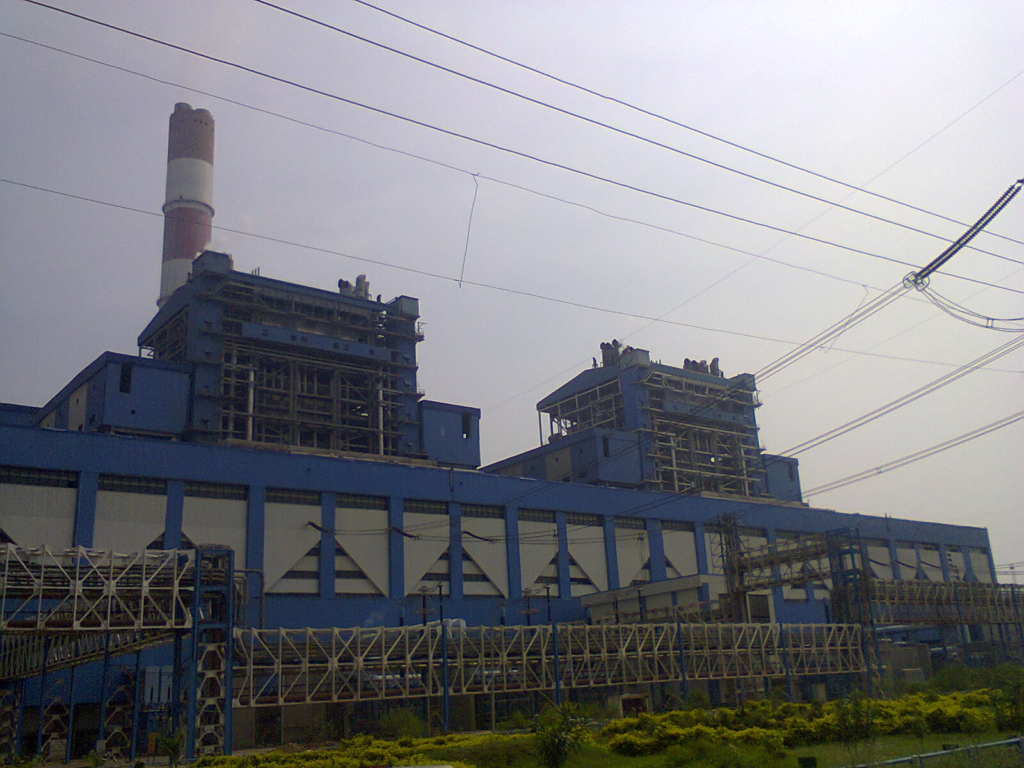
The rise of energy companies in the region is boosting its economic capabilities, and substantial investments are directed towards the development of three proposed railway corridors linked to the energy sector in Bilaspur, with Rs. 5,000 crores earmarked for these infrastructure projects.
Agricultural Hub: The Rice Bowl of Chhattisgarh
Bilaspur is affectionately referred to as “The Rice Bowl” of India, earning the moniker, Dhan Ka Katora. It serves as the center for agricultural products, with approximately 500 rice and dal mills spread across the surrounding areas, contributing significantly to the local economy. The abundance of rice cultivation enhances the city’s role in the country’s agricultural supply chain.
Additionally, the region’s agriculture-driven economy supports livelihoods and facilitates the growth of businesses linked to food processing, distribution, and packaging.
Industrial Growth and Development
The industrial areas around Bilaspur, including Tifra, Sirgitti, and Silpahri, foster a booming manufacturing sector. These industrial zones are home to a diverse range of industries such as sponge iron, chemicals, PVC footwear, polythene bags, and soft drinks.
- Sirgitti Industrial Area spans 338 hectares and houses around 324 industries, generating direct employment for 4,431 people.
- The Silpahari Industrial Centre is recognized for its concentration of sponge iron plants.
- The Tifra Industrial Area caters to chemical, polythene, and other manufacturing industries across 65 hectares.
These industrial regions contribute substantially to the employment and economic output of Bilaspur, with the Chhattisgarh State Industrial Development Corporation (CSIDC) overseeing the development and maintenance of these industrial parks.
Infrastructure and Urban Development
Bilaspur’s rapid urbanization and infrastructure development reflect a rising modern city. The Arpa Project, valued at Rs. 2,000 crores are a major urban renewal initiative aimed at transforming the Arpa Riverbank area. With plans to develop 653 hectares of land, this project will feature residential complexes, commercial centers, entertainment spaces, and robust infrastructure including roads, bridges, water supply, sewerage, and electricity.
Additionally, the city’s development will include new roads, a hi-tech bus stand at Bodri, and increased civic amenities like drainage facilities and advanced water purification systems. Such projects are aimed at improving living standards and stimulating economic growth.
Legal and Banking Sector
Bilaspur also holds significance as the legal center of Chhattisgarh with the presence of the High Court of Chhattisgarh, which is Asia’s largest court in terms of land area. Bilaspur is a key judicial seat for the state, adding to its legal and administrative importance.
In terms of finance, major Indian banks, including SBI, maintain extensive networks of ATMs and branches in the city. As of 2013, SBI alone had around 80 ATMs in the area, highlighting the city’s robust financial sector.
Tourism and Commercial Activity
Bilaspur is a bustling commercial city, home to dynamic marketplaces like Gol Bazaar and Sadar Bazaar. These markets remain vibrant with slow-moving traffic but continue to provide goods and services to locals and tourists alike. Newer commercial areas like Vapar Vihar have emerged as thriving hubs for commercial trade and goods transport.
Future Growth Prospects
Bilaspur’s ambitious economic planning and growing industries, paired with its significant position in the energy and agricultural sectors, promise continuous growth and prosperity. With major infrastructure projects like the Arpa Project and a boost in its industrial base, Bilaspur is poised for long-term economic expansion.
In conclusion, Bilaspur’s economy is diverse, resilient, and evolving. Its contribution to power generation, industry, agriculture, and tourism cements its status as a leading city in Chhattisgarh and an important part of India’s economic future.
Transportation
Roadways: Bilaspur is well-served by an extensive road network, facilitated by several national highways. Key highways include:
- NH-45: Connecting Bhopal, Jabalpur, Amarkantak, and Bilaspur.
- NH-49: Linking Bilaspur to Raigarh, Jharsuguda, and Kharagpur.
- NH-130: Serving the route between Raipur, Simga, Bilaspur, and Ambikapur.
- NH-130A: Connecting Pondi, Mungeli, Bilaspur, Sipat, and Pathalgaon.
Additionally, Bilaspur’s transport system will see further growth with the construction of the Narmada Expressway, linking Bilaspur to Ahmedabad and significantly improving connectivity with neighbouring states. This new expressway is expected to ease the flow of traffic and offer better access to key financial hubs such as Mumbai and Delhi. The EC-7 economic corridor (Raipur-Bilaspur-Ranchi-Dhanbad) passing through Bilaspur under the Bharatmala road network will further enhance the region’s strategic position.
Rail: Bilaspur Junction Railway Station, a pivotal hub, serves as the zonal and divisional headquarters for the Southeast Central Railway zone of Indian Railways. It is one of the busiest railway stations in central India, connecting major cities across India, including Kolkata, Mumbai, New Delhi, Pune, Nagpur, and others. The station holds a reputation as the third cleanest railway station in India and has the fifth-longest platform in the country. Major trains like the Bilaspur Rajdhani Express and Vande Bharat Express provide high-speed connectivity to key national destinations.
The city’s rail infrastructure is further bolstered by ongoing projects like the third and fourth railway lines between Bilaspur and important stations, enhancing the capacity for coal transportation and easing congestion. Uslapur, another important station located 8 km away, is vital for express trains towards Katni.
Bus Transport: Bilaspur’s Hi-tech Bus Stand, a key transport terminal, offers bus services connecting Bilaspur to a vast network of cities. These routes serve nearby towns and cities within Chhattisgarh, as well as major destinations like Hyderabad, Varanasi, Prayagraj, and Bhilai. With both private and government-run buses, the city ensures a seamless transit option for passengers across the state and beyond.

Air: Bilasa Devi Kevat Airport, situated 13 km south of the city, facilitates air travel with flights connecting Bilaspur to destinations like Jabalpur, Hyderabad, Delhi, Kolkata, and Jagdalpur. Operated by Alliance Air, this airport strengthens the region’s accessibility to major cities.

Bilaspur’s comprehensive transport network, along with ongoing infrastructure upgrades, is critical to driving economic growth in the city, supporting both the power generation sector and the industrial landscape. These developments are expected to enhance business and tourism opportunities while fostering further regional integration.
Tourism
Natural Attractions:
- Achanakmar-Amarkantak Biosphere Reserve: A significant tourist attraction recognized by UNESCO for its rich biodiversity and dramatic landscapes, this reserve is home to dense forests, hills, and rivers. The Achanakmar Wildlife Sanctuary, part of this reserve, spans over 551 km² and features various species, including tigers, leopards, and Indian bisons. It is located 55 km from Bilaspur and is best visited during the dry months, as it remains closed in the monsoon.

- Ghongapani Dam: Positioned just before the sanctuary entrance, this dam adds to the serene surroundings. The sanctuary provides accommodation at government guest houses in Achanakmar, Keonchi, and Lamni. The Lamni guest house, built in 1913 by the British, is located 1,850 feet above sea level.
- Sonmuda: Situated 106 km from Bilaspur, this scenic location offers a panoramic view of valleys and hills and is the origin of the Sone River.
- Amarkantak: Known as the source of the Narmada River, this beautiful location, 117 km northwest of Bilaspur, is nestled in Madhya Pradesh and is famous for its spiritual significance.
Man-made & Historical Attractions:
Bilaspur and its surroundings are home to several archaeological sites and temples, many of which reflect the region’s rich cultural history:
- Ratanpur: Serving as the capital of ancient Chhattisgarh until the Maratha Empire, Ratanpur holds significant religious value. The Mahamaya Temple and Ram Tekri Mandir are popular spiritual landmarks.
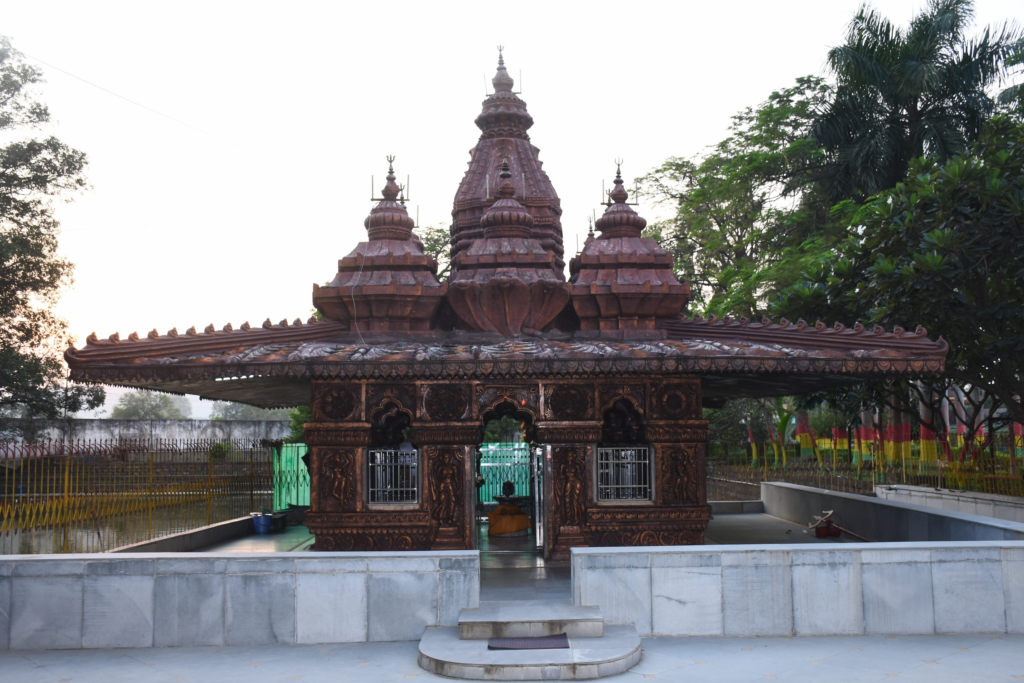
- Malhar: About 31 km southeast of Bilaspur, Malhar is famous for its ancient ruins, temples, and historical significance. The area is home to sites like the Pataleshwar Temple and Devri Temple. Excavations have revealed a four-handed idol of Lord Vishnu, believed to be the earliest sculptural representation from the Ratnapura–Kalachuri era.
- Talagram and Tala Temples: Both located near Bilaspur, these locations, with the Deorani-Jethani Temple in Talagram and the Rudra Shiva Temple in Tala, offer historical and cultural experiences.
- Kirari Godhi and Sargaon Temples: Known for their ancient Shiva temples, these sites, located 19 km and 27 km from Bilaspur, date back to the 11th-12th centuries and are significant for their religious and historical value.

- Kabir Chabutra: Located 110 km south of Bilaspur, this site is a hub for spiritual seekers and is dedicated to saints and philosophers like Kabir.
- Malhar Museum: Located in Malhar, this museum, maintained by the Archaeological Survey of India, offers a glimpse into the region’s historical and archaeological importance.

Modern Attractions:
- Kanan Pendari Zoological Garden: A popular local attraction, this zoo is situated within the city limits and provides an engaging experience for visitors interested in wildlife.
- Amusement Parks and Water Parks: Bilaspur is home to several recreational spots, including Bubble Island, Waterbomb, Radhika Water Park, and Ishika Amusement Park, which are ideal for families and children.
- Smriti Vatika: A green oasis located near the Kanan Pendari Zoological Garden, offering a relaxing atmosphere for visitors.
- Rani Sati Temple and Smriti Van: These temples and parks within Bilaspur provide opportunities for visitors to engage in religious activities or simply enjoy the beauty of the area.
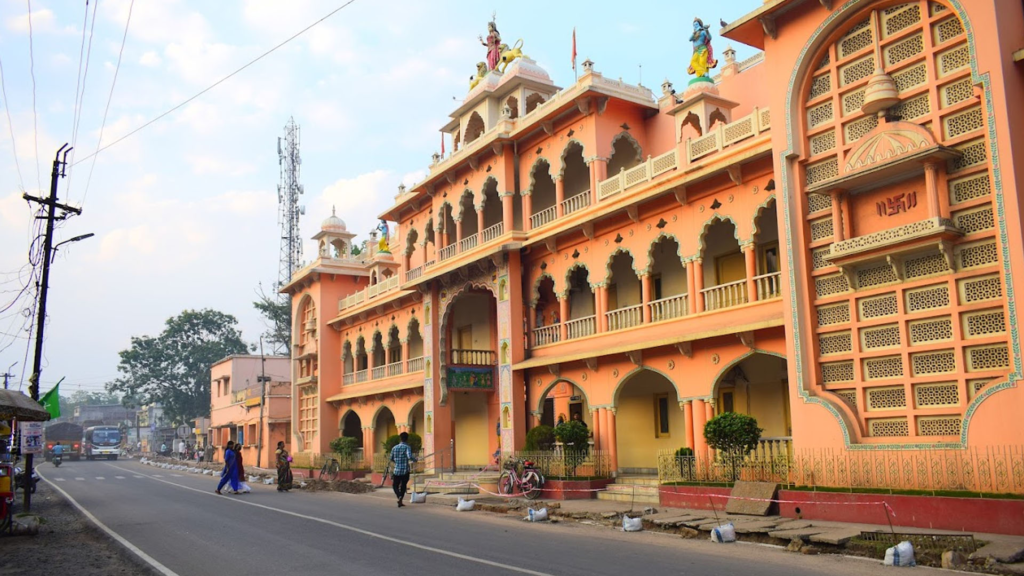
Other Points of Interest:
- Dams: Notable dams like the Khutaghat Dam, Khudia Dam, and Hasdev Bango Dam are located within 55 to 105 km of Bilaspur, known for their lush surroundings and tranquil environments.
- Mungeli and Pali Temples: The Maa Mahamaya Temple in Mungeli and the Mahadev Temple in Pali attract religious tourists, offering historical and spiritual value.
Bilaspur is a blend of nature and history, offering something for every kind of traveler, from wildlife enthusiasts and historians to adventure lovers and religious visitors. The city’s ample natural beauty, combined with its rich historical heritage, makes it an important and growing tourism destination.
Food & Cuisine:
Bilaspur is renowned for its diverse and distinctive cuisine, which is a unique blend of traditional and regional flavors, incorporating rice, wheat, and lentils as key ingredients. The variety of food available in Bilaspur reflects the region’s cultural richness and agricultural heritage.
- Doobraj Rice: A local delicacy, this rice variety is known for its unique texture and taste, making it a staple food item for many Bilaspur residents.
- Fara/Muthiya: These rice flour dumplings are popular in Bilaspur, offering a savory or spicy twist. The dish can be either steamed or fried and is a favorite snack during festivals or daily meals.
- Doodh-Fara: A milder, sweeter version of the traditional Fara, doodh-fara is cooked in a milky sauce, making it a comforting dish enjoyed by many during the colder months.
- Cheela: Similar to a dosa, Cheela is a rice-based pancake served with chutney, often as a breakfast option in Bilaspur.
- Rice Roll: This is a variety of dish made with rice, often rolled in various fillings, creating a delicious fusion of flavors.
- Sohari (Poori made from Rice Flour or Sweet Potato): These deep-fried poori-like snacks, made with rice flour or sweet potatoes, are enjoyed as part of breakfast or dinner.
- Ayirsa Roti: A dry dish made from rice and jaggery, this delicacy is particularly popular in rural areas of Bilaspur.
- Gulgula/Gulgul Bhajiya: Sweet fritters made from wheat flour, these deep-fried treats are crispy and have a rich, sweet flavor that people indulge in.
- Angakar/Mota Roti: This roti, made from rice or wheat flour, often uses leftover rice and is a key part of local meals, offering a unique texture and flavor.
- Thetri-Khurmi and Chousela (Rice Flour Poori): These dishes feature rice flour as their base, providing a satisfying and savory experience.
- Bhajiya Kadhi: A savory, salty yogurt-based dish, often enjoyed with bhajis or fritters, adding a creamy and flavorful element to the meal.
- Sabudana Bada: These sago fritters are crunchy and savory, typically eaten during fasting or as a snack.
- Bafuari/Bhajiya and Idhar Kadhi (Kadhi made with Arbi Leaves): A traditional dish of fritters served with a kadhi made from arbi leaves, representing the uniqueness of Bilaspur’s cuisine.
- Tamatar Fatka (Tomato Chutney): A tangy chutney made from tomatoes, adding spice and flavor to meals.
- Leafy Vegetable Bhajis: Commonly found in Bilaspur’s local kitchens, these include bathua, palak, chench, tirpaniya, khatta bhaji, laal bhaji, amari patua, and Bohar Bhaji, offering essential nutrients and distinctive flavors.
Bilaspur also produces wheat, known as Sharbati for its sweetness and refreshing taste, which is often used to make soft and tasty rotis, a favorite among the locals. The blend of rice, wheat, and lentils in various forms adds to the unique nature of the region’s food culture.
Education:
Bilaspur has steadily grown into a prominent educational hub, drawing students from across the state and beyond to pursue education in a variety of fields, including engineering, medicine, and management.
- Universities:
- Guru Ghasidas Vishwavidyalaya: A central university offering diverse undergraduate and postgraduate programs, making it one of the prominent higher education institutions in the region.
- Atal Bihari Vajpayee Vishwavidyalaya: Another significant institution, offering specialized courses in various disciplines and helping shape the future of Chhattisgarh’s youth.
- Pandit Sundarlal Sharma (Open) University: Offering flexible distance education options, this university caters to a wide range of students, making higher education accessible across the state.
- Dr. C. V. Raman University and Maharishi University of Management and Technology: These institutions offer innovative courses, particularly in management and technology, catering to students interested in newer career paths.
- Colleges: Bilaspur’s colleges maintain high academic standards, with institutions such as the Institute of Technology, Chhattisgarh Institute of Medical Sciences, and Government E. Raghvendra Rao P.G. Science College providing quality education in engineering, medical sciences, and other specialized fields. The high accreditation ratings of these institutions further underline the city’s reputation for academic excellence.
- Schools: Bilaspur has a robust education system with both public and private schools. Schools like Krishna Public School, Delhi Public School, and Kendriya Vidyalaya are popular for their high educational standards and focus on extracurricular activities alongside academics.
The city supports active engagement in extracurriculars like sports and NCC (National Cadet Corps), with one of the 14 army wing NCC battalions operating under the Madhya Pradesh and Chhattisgarh directorate. This multi-faceted approach to education makes Bilaspur a key city for students in Chhattisgarh looking for diverse academic experiences.
In conclusion, Bilaspur’s unique blend of traditional cuisine and strong educational infrastructure offers residents and visitors alike a mix of cultural and intellectual growth, making the city an enriching place to live, work, and study.
Media in Bilaspur
Bilaspur, a growing hub in Chhattisgarh, is home to a vibrant media landscape, which includes diverse forms of media such as print, electronic, radio, and digital platforms. The city’s media scene plays a crucial role in disseminating news, entertainment, and information, contributing to the state’s cultural and informational fabric.
Print and News Media
Bilaspur has a number of newspapers in Hindi, reflecting the city’s deep connection to regional and national news. These newspapers are crucial sources of daily updates on local, national, and international affairs:
- Patrika
- Dainik Bhaskar
- Nava Bharat
- Hari Bhoomi
- Deshbandhu
- Swadesh News
These print media outlets serve not only as news sources but also act as platforms for discussions on various social, political, and economic issues.
Electronic Media
Bilaspur also boasts a robust electronic media ecosystem, with several local news channels that provide 24/7 coverage of events in and around the city. The following channels are vital for staying updated on real-time developments:
- Chhattisgarh Cable Networks (CCN)
- Grand Gumber Channel
- Siti News Channel
- Abhi Tak (CCN owned news channel)
- Z 24 Ghante – Chhattisgarh Bilaspur Bureau
- E TV M.P. CG. Bilaspur Bureau
- Sahara TV M.P. CG. Bilaspur Bureau
- P7/Pearls News M.P. C.G. Bilaspur
- Aaj Tak, Bilaspur Bureau
- India TV, Bilaspur Bureau
These channels offer extensive local news, current affairs, and more, helping residents stay informed and connected to events happening at both the city and state level.
Radio Stations
Bilaspur has several FM radio stations that cater to diverse audiences with programming ranging from music and entertainment to news and public service:
- Radio Raman (Community Radio Station of Dr. C.V. Raman University) – 90.4 FM
Slogan: Hamar Radio Hamar Sangi - FM Tadka – 91.1 FM
Slogan: Apni Suno..! - Radio Orange – 91.9 FM
Slogan: Kuch Khatta Kuch Meetha - Radio Rangila – 92.7 FM
Slogan: Jam Ke Suno - My FM – 94.3 FM
Slogan: Jiyo Dil Se - All India Radio Bilaspur & Vividh Bharti – 103.2 FM
Slogan: Desh Ki Surili Dhadkan
These radio stations are a critical part of the daily lives of Bilaspur’s residents, providing entertainment, local news, music, and cultural programming.
TV/Doordarshan
Bilaspur hosts a high-power TV transmitter for Doordarshan in Bahatarai, making it an important hub for national and regional television broadcasts. This platform further contributes to the dissemination of national news, cultural programs, and governmental information in Chhattisgarh.
Web Portals
In addition to traditional media forms, the digital space also plays an important role in keeping Bilaspur connected:
- Bilaspur Government Website – bilaspur.gov.in
This official portal offers access to e-governance projects, land records, and other vital government services. - Bilaspur University – bilaspuruniversity.ac.in
The official website serves as a gateway to educational resources for students, especially those enrolled at Bilaspur University and affiliated institutions. - CIMS Medical College – cimsbilaspur.ac.in
Serving as the portal for CIMS-Chandulal Agrawal Memorial Medical College, this site is essential for medical students and staff in the region.
Notable People from Bilaspur
Bilaspur has been the birthplace or residence of many distinguished personalities who have contributed significantly to various fields such as sports, literature, politics, and entertainment. Some of the most notable individuals include:
1. Leslie Claudius
A former Olympic field hockey player, Leslie Claudius is one of India’s most celebrated sports icons. He has the unique distinction of being one of only two Indian players to have won four Olympic medals. His achievements in the sport of field hockey have made him a prominent figure in Indian sports history.
2. Balakrishna Shivram Moonje (B. S. Moonje)
B. S. Moonje was a prominent leader of the Hindu Mahasabha. He was known for his strong political influence and contribution to the socio-political landscape of India. His leadership in the organization and his work for Hindu nationalism marked a significant chapter in India’s pre-independence history.
3. Satyadev Dubey
A Padma Bhushan awardee, Satyadev Dubey was an iconic theater director, actor, playwright, and screenwriter. Known for his bold plays, Dubey worked with actors like Amrish Puri in Andha Yug. He also directed notable films like Junoon (1979), Bhumika (1977), and Aakrosh (1980), leaving an indelible mark on Indian cinema.
4. Makhanlal Chaturvedi
A renowned poet and freedom fighter, Makhanlal Chaturvedi wrote the famous poem Pushp Ki Abhilasha (Hindi: पुष्प की अभिलाषा) while imprisoned in Bilaspur Central Jail by the British. His literary contributions, especially in the form of patriotic and nationalistic poetry, are deeply rooted in India’s independence struggle.
5. Bimal Mitra
Bimal Mitra was a celebrated Bengali writer known for his extensive works, including over one hundred novels and short stories. His famous novel Shaheb Bibi Golam was adapted into a Hindi film. Mitra spent several years working for the railways in Bilaspur, and his contribution to Bengali literature has earned him a lasting legacy.
6. Sandeep Shrivastava
A talented screenwriter and lyricist, Sandeep Shrivastava is best known for his work on films like Shershaah, Ludo, New York, and Ab Tak Chhappan. His writing has been an influential part of contemporary Indian cinema, contributing to the success of several critically acclaimed films.
7. Bilasa Devi
Bilasa Devi is credited with founding Bilaspur city. Known as the “Amazon of Chhattisgarh,” she played a crucial role in the establishment and development of the city, which later became an important cultural and economic hub in the region.
8. Satyajeet Dubey
Satyajeet Dubey is a voice and film actor who has made notable appearances in both television and film. His contributions to Indian entertainment have gained him recognition, particularly in the field of voice acting and film production.
9. Ajit Jogi
Ajit Jogi was the first Chief Minister of the state of Chhattisgarh, serving from 2000 to 2003. A key political figure, Jogi is remembered for his role in the creation of Chhattisgarh and his efforts towards its development during his tenure in office.
10. Ingrid Mcleod
Ingrid Mcleod was a nominated member of the Lok Sabha, representing India’s Anglo-Indian community. She contributed to the representation of minority groups in the national legislative body, advocating for their rights and welfare.
11. Shrikant Verma
Shrikant Verma was a noted poet and former Member of Parliament. Known for his literary works, Verma made significant contributions to Hindi literature. His poetic prowess continues to inspire many in the world of literature and politics.
12. Arun Sao
Arun Sao is a former Member of Parliament from the Bilaspur Lok Sabha seat. Additionally, he served as the Deputy Chief Minister of Chhattisgarh. His political career and leadership have significantly shaped the governance of the state.
13. Jagannath Prasad Bhanu
Jagannath Prasad Bhanu was a respected Hindi scholar and writer of poetry and prose. His literary works have left a deep impact on Hindi literature, earning him admiration as a celebrated writer.
14. Tokhan Sahu
Tokhan Sahu, a Member of Parliament from the Bilaspur Lok Sabha seat, has also served as the Minister of State for Housing and Urban Affairs in India. His tenure in public office is marked by his contributions to the development of housing and urban issues at the national level.
Conclusion
Bilaspur’s rich history is reflected in the lives of these individuals who have excelled in their respective fields. Whether in sports, politics, literature, or entertainment, their work has contributed not only to the city’s legacy but also to the broader cultural and social fabric of India.

